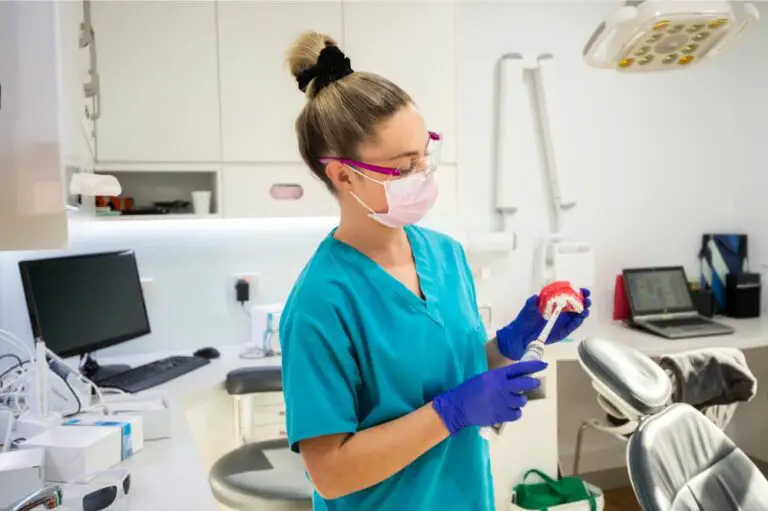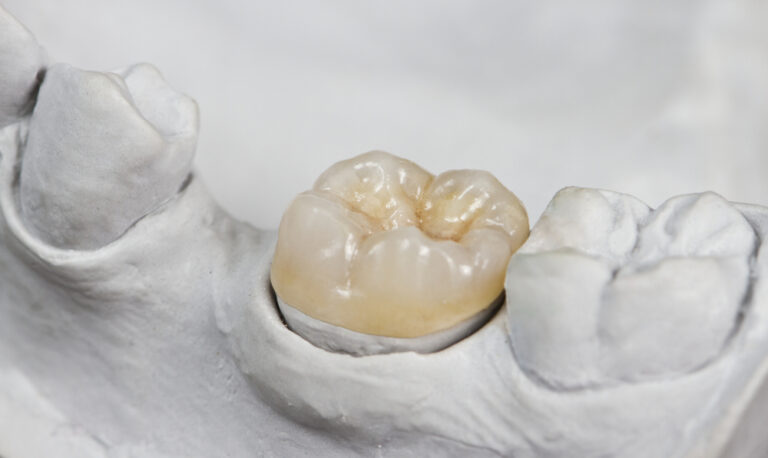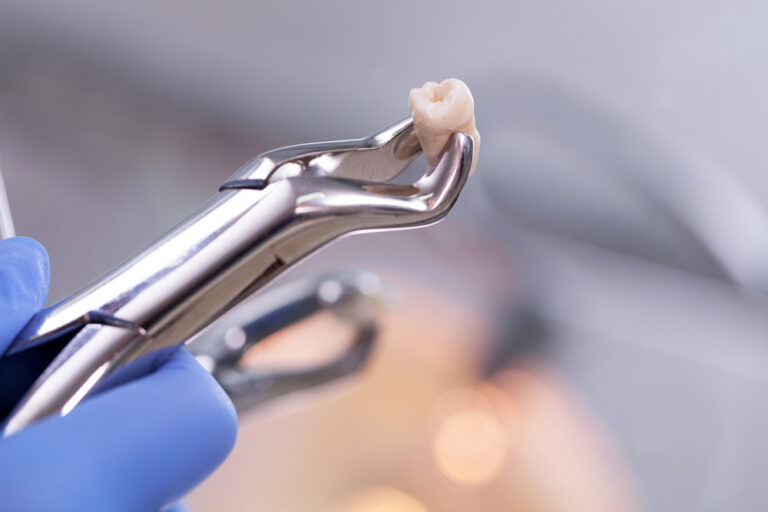Teeth whitening has become an increasingly popular cosmetic dental treatment, providing an affordable and relatively non-invasive way to brighten your smile. However, while generally safe for most people when properly done, teeth whitening is not appropriate for everyone. Certain medical conditions and situations can increase the risks associated with bleaching your teeth. Understanding the key contraindications is important in determining if teeth whitening is right for you.
Key Contraindications and Precautions for Teeth Whitening
1. Pregnancy and Breastfeeding
Pregnant and breastfeeding women are advised to avoid teeth whitening due to the potential risk of ingesting small amounts of whitening gel or hydrogen peroxide. While minimal absorption occurs when used as directed, the safety for developing babies and infants has not been established. Whitening is best postponed until after pregnancy and the breastfeeding period has ended.
2. Children Under 16 Years Old
The pulp chambers in teeth are larger in children before all their adult teeth have come in. This means more of the whitening gel could potentially penetrate into the tooth during bleaching. Therefore, peroxide whitening is not recommended for children under 16 years old. Alternative methods like brushing with whitening toothpaste may be used, but should be discussed with a pediatric dentist.
3. Tooth and Gum Sensitivity
People with existing tooth sensitivity or gum disease need to use caution with whitening treatments. The whitening agents can further aggravate and inflame sensitivity and irritated gums. A professional evaluation of your oral health is recommended to determine if in-office bleaching under supervision may be attempted or if it should be avoided entirely until sensitivities are under control.
4. Allergies to Ingredients
While allergies to hydrogen peroxide or whitening gel components are very rare, anyone with known sensitivities should consult a dentist first about their level of risk. Mild redness and irritation during a whitening session is common, but more severe reactions like swelling of the throat, lips or tongue are dangerous signs of allergy. Discontinue use and seek emergency care if serious reactions occur.
5. Bruxism and Other Oral Health Conditions
People with bruxism (teeth grinding), eating disorders, gastroesophageal reflux disease (GERD), or other conditions that can damage tooth enamel should get guidance from their dentist before whitening. The existing enamel damage makes teeth more prone to sensitivity and further erosion during bleaching. Managing underlying oral health issues first allows whitening to then be done more safely and successfully.
6. Recent Surgery or Extractions
It’s best to allow gums and any wounds to fully heal after having recent oral surgery, extractions, or other dental procedures before whitening. The typical recommendation is to wait 2-3 weeks after surgical procedures that required suturing before attempting any bleaching. This allows tissues to mend and lowers risks of irritation, infection or bleeding.
7. Crowns, Veneers and Other Restorations
Since whitening only affects the natural tooth structure, fake teeth and dental work like veneers, crowns, bridges and fillings will not change color from the bleaching agents. This can result in unnatural looking mismatches between natural teeth and restorations. Whitening right before getting these restorations is ideal for the most natural, uniform results.
8. Gum Disease and Tooth Decay
Existing gum disease, inflamed gums or untreated tooth decay need to be addressed by a dentist before considering whitening your teeth. Bleach can be painful and further aggravate gum and root sensitivity if these underlying problems are not resolved first. Healthy teeth and gums are necessary to safely undergo the whitening process.
How Does Teeth Whitening Work?
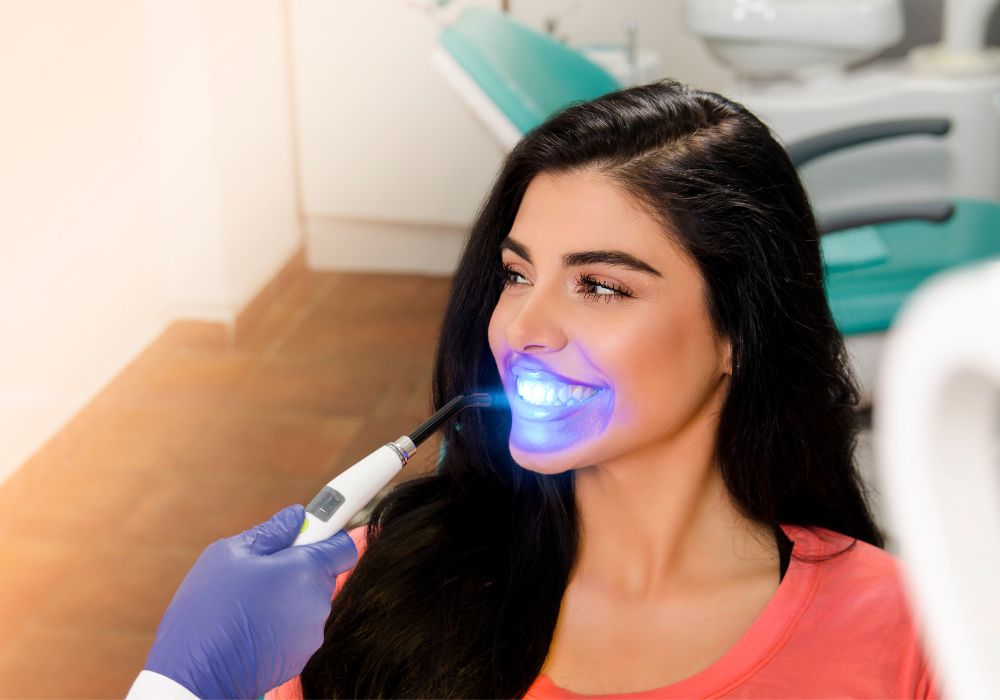
Understanding what tooth whitening involves and how it brightens your smile will help you make the most informed, safe choice for your needs.
Bleaching with Peroxide
The active ingredient in nearly all teeth whitening products, including strips, trays, paint-ons and professional formulas, is some type of peroxide. The most common types are hydrogen peroxide and carbamide peroxide.
As the peroxide in the whitening formula breaks down, free radicals are released. These unstable oxygen molecules penetrate the pores in enamel and react with organic pigments trapped in dentin. Through repeated bleach application, the stains are broken down and teeth appear lighter and brighter.
Whitening Methods and Concentration
Over-the-counter whitening products typically contain low concentrations of peroxide, ranging from 3-10%. This allows for gradual bleaching over days or weeks of daily use. Dentist supervised office treatments contain 15-40% hydrogen peroxide and achieve more dramatic whitening in one or two visits of 30-60 minutes each.
The delivery method also impacts results. Custom fitted trays provide the most even bleaching, while whitening strips and paint-on products cause uneven results since saliva quickly washes them away. In-office treatments allow precise control over even bleaching across all teeth.
Results and Duration
Visible lightening is seen in as little as a few sessions for some when using peroxide whitening products properly. However, individual results vary based on the original tooth shade, genetics and source of any staining. Those with darker or more intrinsically stained teeth see the most dramatic improvements, while those with more translucent yellow tones may only achieve a couple shades of lightening.
Whitening effects are temporary and not permanent. On average, teeth will start gradually darkening again in 6-12 months. Periodic touch-up whitening allows you to easily maintain results. More lasting whitening comes from dental bonding, crowns or veneers.
Are There Side Effects of Teeth Whitening?
The safety of peroxide-based whitening relies on following instructions for use carefully. This minimizes the risk of any side effects and helps optimize your results.
Tooth Sensitivity
The biggest side effect of bleaching is heightened tooth sensitivity and gum irritation during treatment. About two-thirds of users report this problem, but it usually resolves within a few days after whitening stops. Using a desensitizing toothpaste beforehand and avoiding cold foods and beverages right after whitening can help.
Soft Tissue Irritation
Whitening products can also cause temporary redness, swelling or white patches on the gums, lips, cheeks and palette when exposed to peroxide gels. This is prevented by using only the recommended amount and rinsing any excess off the gums. Irritation typically resolves quickly once exposure stops.
Enamel Erosion
Overuse or improper application of peroxide whiteners can lead to enamel weakening and surface erosion. However, studies show appropriate use causes only minor, insignificant enamel changes. Using fluoride treatments after bleaching re-hardens and strengthens enamel.
Increased Stain Propensity
Evidence shows that for a short period of about 2 weeks after whitening, teeth are more prone to re-staining because the pores in enamel remain open. Avoiding dark colored foods and drinks or smoking right after whitening prolongs results. The enamel reseals over time.
Relapse and Rebound Discoloration
Returning staining due to inadequate bleaching can cause teeth to relapse back towards their original color. “Rebound” discoloration describes teeth ending up even darker than pre-whitening due to this over-staining. Maintaining results with periodic touch-ups helps prevent this.
When performed correctly under the guidance of a dentist, whitening side effects remain minimal, harmless and temporary. Practicing good oral hygiene and avoiding behaviors that stain teeth after whitening keeps your brightened smile for longer.
Who Are the Best Candidates for Teeth Whitening?
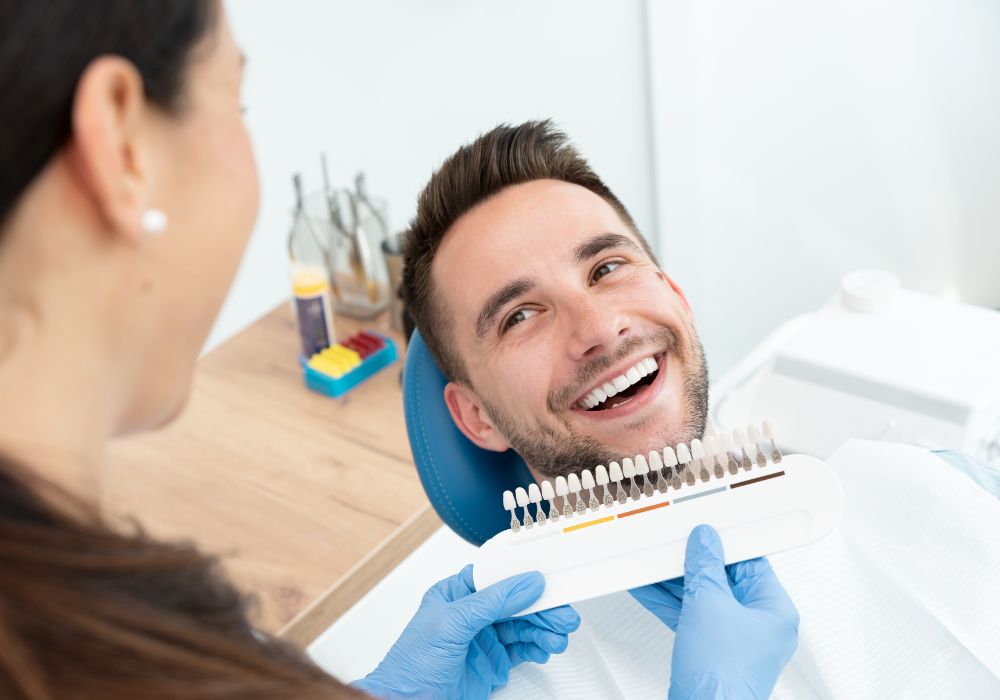
Those who achieve the most dramatic improvements in their smile through professional or at-home whitening often share certain characteristics:
Light to Medium Tooth Staining
Individuals with lighter amounts of intrinsic staining and yellowing or brownish external staining from foods, drinks or smoking respond best to bleaching. Grayish teeth may lighten slightly, but severe intrinsic discoloration often needs other cosmetic solutions.
No Tooth Sensitivity
People without any pre-existing tooth sensitivity undergo more comfortable whitening with fewer side effects and risks. They can use higher peroxide concentrations and extended treatment times for optimal results.
Good Overall Oral Health
Healthy teeth and gums that are cavity-free, with no gum disease or other oral health issues can safely be bleached without irritation or other problems. An oral exam should detect any areas needing treatment first.
Realistic Expectations
Understanding that whitening effectiveness varies by individual and the type of staining determines how pleased you will be with the degree of lightening. Realistic expectations of a few shades of brightening ensure satisfaction.
Willingness for Maintenance
Acknowledging that bleaching is not permanent and being willing to maintain results through repeated touch-ups or professional treatments prevents disappointment when eventual relapse occurs.
As long as you do not have any contradictions and feel you meet the profile of someone likely to achieve satisfying whitening results, discussing options with your dentist can help determine the best products and approaches tailored for you.
Whitening Methods Comparison Chart
| Method | Application | Concentration | Duration | Results | Cost | Sensitivity |
|---|---|---|---|---|---|---|
| Professional In-Office | Dentist applied gel with light | 15-40% hydrogen peroxide | 1-2 visits, 30-60 min each | Most dramatic, 4-8 shades lighter | $300-$1,000 | Moderate |
| Custom Trays | Wear trays with gel at home | 10-22% carbamide peroxide | Daily, 1-2 weeks | Gradual, 2-5 shades lighter | $200-$500 | Mild to moderate |
| Whitening Strips | Apply strips to teeth | 5-10% hydrogen peroxide | Daily, 1-4 weeks | Subtle, 1-3 shades lighter | $25-$75 | Mild |
| Whitening Toothpastes | Brush daily | Low % hydrogen peroxide | Weeks of use | Very gradual, 1-2 shades lighter | $5-$15 | None |
Frequently Asked Questions
Who should not get their teeth whitened?
Teeth whitening is not recommended for pregnant or nursing women, children under 16, people with gum disease, tooth decay or oral health issues, those with allergies to the ingredients, and people with crowns, veneers or other restorations that won’t lighten.
Does insurance cover teeth whitening treatments?
Most dental insurance plans exclude teeth whitening from their coverage since it is considered a cosmetic procedure, much like botox injections or a nose job. Some plans may offer slight discounts or reimbursements.
Is whitening bad for your teeth?
When peroxide solutions are used correctly at safe concentrations, several research studies indicate there is no significant harm to tooth structure or dental health. Minor sensitivity and gum irritation during the process are the main risks.
How often can I safely whiten my teeth?
It is generally recommended to avoid repeated whitening treatments more frequently than every 6 months. This allows enough of a rest period for the teeth and gums to recover from temporary sensitivity caused during each bleaching application.
How long do whitening results last?
On average, teeth lightened by 3-8 shades will stay that way for 6-12 months, gradually regressing closer to the original color. Avoiding staining drinks, smoking and other habits help prolong results. Periodic touch-ups maintain the brightened color.



